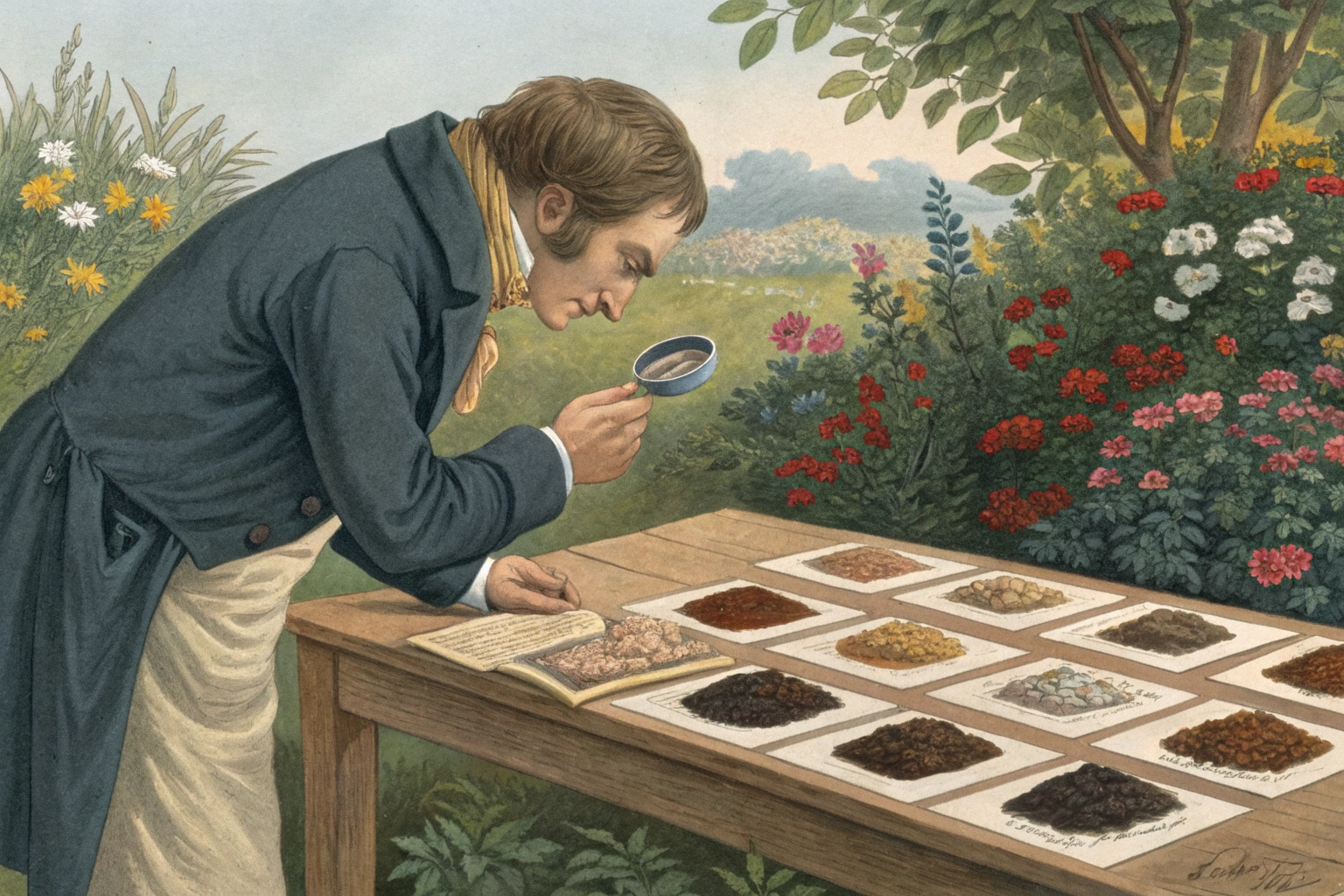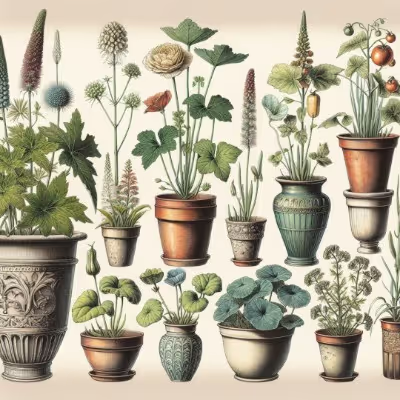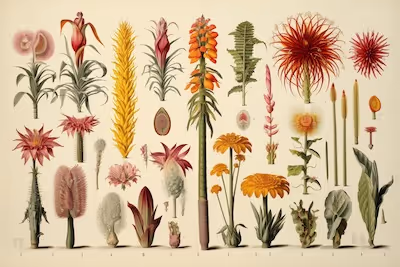How to Read Your Soil Test Like a Pro

How to read a soil test
Learn how to read a soil test: check pH first; most veggies thrive at 6.0–7.0. To learn how to read a soil test, scan N–P–K, organic matter 3–5%, and CEC; higher CEC holds nutrients longer. Then apply how to read a soil test to match results to crop needs, and plan lime, sulfur, or compost by the lab’s pounds per 1,000 sq ft. I’ll translate the numbers and get your beds feeding plants like a well-run kitchen.
Cheatsheet: Interpret Your Soil Test Results Fast
🧪 Collect Accurate Results
- Sample soil from 6–8 spots, 4–6 in (10–15 cm) deep
- Mix well, dry, send to a certified lab
📄 Understand Key Metrics
- pH: 6.0–7.0 optimal for most crops
- Nitrogen (N): Drives leafy growth
- Phosphorus (P): Root, flower, fruit power
- Potassium (K): Disease resistance, water regulation
- Micronutrients: Iron, zinc, copper, manganese, boron
- Organic Matter: 3–5% builds structure, holds nutrients
- Note: Over 70 percent of US soils test low in nitrogen
📊 Decipher Your Results
- pH < 6.0: Add lime
- pH > 7.5: Add sulfur or organic matter
- Low N: Add compost or blood meal
- Low P: Add bone meal or rock phosphate
- Low K: Use greensand or potash
🌱 Boost Health & Self-Sufficiency
- Balanced soil = up to 30% higher yields
- Proper pH improves nutrient absorption, reducing deficiencies
- Improves nutrition density in homegrown food
🛠️ Tools and Products You'll Need
- Soil probe or trowel
- Sample bags
- Certified soil lab
- Lime, sulfur, compost (as needed)
- Notebook for tracking
✅ Step-by-Step How-To
- Collect soil samples: 4–6 in (10–15 cm) deep, 8 locations
- Mix, dry, label, and submit to lab
- Review report: mark low/high values
- Amend soil as recommended
- Retest in 1 year for tracking
I still remember the first lab sheet I opened while a kettle hissed in the kitchen like a steam engine. It looked like a blood panel for a dragon, but once I learned the lines, the garden started answering back.
pH runs on a logarithmic scale, which means a soil at 5.5 is ten times more acidic than 6.5. Most crops and ornamentals thrive at 6.0 to 7.0, with blueberries and azaleas happy closer to 4.5 to 5.5.
If your sheet lists both water pH and buffer pH, the buffer number estimates lime need. A low buffer pH signals the soil will swallow lime before budging the water pH.
University extensions consistently note: “The pH scale is logarithmic; a change of one unit equals a tenfold change in acidity or alkalinity.”
CEC (cation exchange capacity) reads like battery capacity, reported as cmolc/kg. Sands hover around 1 to 5, loams 5 to 15, clays 15 to 40, and organic soils can tower over 30.
Base saturation breaks that capacity into percentages of Ca, Mg, K, and Na sitting on the exchange sites. For mixed beds, I aim roughly Ca 65 to 75 percent, Mg 10 to 15 percent, K 3 to 5 percent, and Na under 2 percent.
If K saturation spikes above 7 percent, magnesium can read low in plant tissue even when the soil looks fine. I learned that the hard way with peppers that sulked until I eased off potash.
Organic matter at 3 to 6 percent is a sweet spot for many gardens, with native mineral soils often closer to 1 to 3 percent. Above 8 percent, expect spring soils to warm slower and bind nitrogen early.
Texture classes on the report, or a lab hydrometer result, explain drainage and leaching. Sand sheds nutrients; clay holds them; silt behaves like a diplomat between the two.
USDA NRCS notes: “Soil organic matter contains roughly 58 percent carbon by weight,” which is why small OM increases can change soil behavior in outsized ways.
Phosphorus appears as Bray, Mehlich, or Olsen, depending on pH and region. On neutral loams, low P stunts roots; high P locks up zinc and iron.
Potassium fuels turgor and disease resistance. On high CEC clays, K can test adequate yet read low in foliage after heavy rain because calcium crowds the dance floor.
Calcium and magnesium show up as part of base saturation. Aim for a balanced ratio by need, not a magic number; plants use absolute amounts, not numerology.
Nitrogen rarely appears as a reliable lab value, since it moves fast. Use organic matter, crop history, and season to set N plans, then verify with plant color and quick tests.
Iron, manganese, zinc, boron, copper, molybdenum sit behind many mystery chloroses. pH acts like a bouncer here, especially for iron and manganese above 7.2.
Boron lives on a razor blade. Many labs flag 0.5 to 1.0 ppm as adequate, and anything over 2 ppm starts burning tips on sensitive crops.
EC or salinity under 2 dS/m plays nicely for most plants. Seedlings prefer under 1 dS/m.
SAR and ESP gauge sodicity. SAR under 13 and ESP under 15 percent avoid dispersion that turns soil into pudding after rain.
- Circle pH, buffer pH, CEC, organic matter, and base saturation. These set the stage.
- Scan macronutrients next, with P and K first, then Ca, Mg, and S.
- Check micronutrients with pH in mind. High pH plus pale leaves hints at iron or zinc tie-up.
- Look at salinity, SAR, and chloride if irrigation water is salty or if beds look crusted.
- Read the lab’s recommendations, then translate them into local materials and application timing.
If a lab calls for 50 lb/1000 sq ft of calcitic lime, that equals about 244 kg per 1000 m², spread in fall for slow change. Dolomitic lime makes sense when Mg tests low and pH sits under 6.0.
For a 1 ppm K raise in the top 6 inches, many loams need roughly 7 to 10 lb K2O per 1000 sq ft, or about 34 to 49 kg per 1000 m². I split spring applications to reduce luxury K uptake.
- High P with pale new leaves: often zinc or iron deficiency masked by the P surplus.
- pH under 5.5 with low Ca and high Mn: fix pH first or you’ll chase symptoms.
- K saturation over 7 percent with low Mg in tissue: reduce potash, add magnesium sulfate at 10 to 20 lb/1000 sq ft, 49 to 98 kg/1000 m².
- EC over 2 dS/m in seedbeds: leach with high-quality water, then refeed lightly.
Fall: apply lime or elemental sulfur, broad compost, and rock minerals that react slowly. Winter: order amendments and seed cover crops that fit the nutrient picture.
Spring: address N and K with quick-release organics, and band P only where needed. Midseason: tissue test fast crops like lettuce or peppers, confirm your reading of the soil sheet, and tweak.
- pH: acidity or alkalinity, on a log scale.
- Buffer pH: lime requirement estimator.
- CEC: nutrient holding capacity; higher resists swings.
- Base saturation: proportion of Ca, Mg, K, Na on exchange sites.
- EC: salinity level, dS/m.
- SAR/ESP: sodium risk metrics.
- Color-strip kits estimate pH well enough for liming decisions, but they wobble on P and K.
- Professional labs give extraction-specific P and K, CEC, base saturation, and salinity. That context saves money on amendments.
- I retest the same bed every 2 to 3 years unless I’ve made big changes or noticed a crop crash.
- Regional university labs: tuned to local soils and fertilizers, with straightforward recommendations.
- Independent agricultural labs: deeper panels, strong on CEC, base saturation, and salinity for intensive beds or tunnels.
- Specialty biological panels: useful if you manage high-organic beds and want respiration or CO2 burst numbers, though I treat them as complements.
- A calibrated pH meter and standard buffer solutions for spot checks in spring and fall.
- A decent scale and scoop set so 2 lb/100 sq ft, or 1 kg/50 m², means the same every time.
- Two limes on hand: calcitic for Ca pushes, dolomitic for Mg deficits with low pH.
- Elemental sulfur prills for high pH beds, applied lightly and rechecked after 6 months.
- Gypsum for sodic or tight clay soils where you want Ca without raising pH.
- Low pH, low Ca: calcitic lime at 30 to 50 lb/1000 sq ft, 146 to 244 kg/1000 m², split fall and spring.
- High pH, iron chlorosis: chelated Fe drenches plus elemental sulfur at 5 lb/100 sq ft, 2.4 kg/100 m², then mulch with acidic compost.
- Low K on sandy soil: sulfate of potash split into three feeds, watch EC, and mulch to slow leaching.
- High P from years of manure: pause P inputs, plant P-hungry crops, and use micronutrient foliar sprays to bypass tie-up.
Labs often recommend rates for acres, so convert to beds. One acre equals 43,560 sq ft or 4,047 m².
If they list N-P2O5-K2O, remember those are oxide forms. To get elemental P, multiply P2O5 by 0.44; for elemental K, multiply K2O by 0.83.
I watch active carbon or respiration scores when offered, but I still let yield and soil feel lead the story. Earthy smell, easy crumble, and steady color on leaves beat one shiny number.
Justus von Liebig wrote: “The growth of a plant is limited by the scarcest resource.” A soil test shows the bottleneck so you can remove it.
- How often should I test? Every 2 to 3 years, or yearly for intensive beds and tunnels.
- Can I over-lime? Yes. Overshooting pH above 7.2 invites micronutrient problems that are expensive to unwind.
- Do I need gypsum? Only if sodium is high or you need calcium without lifting pH.
- Is compost a fertilizer? Compost feeds carbon and microbes first. I still budget N, P, and K separately for vegetables.
Use a clean trowel and bucket, take 10 to 15 cores from the top 6 inches, mix, air-dry, and send. Avoid sampling right after fertilizing or liming, or you’ll chase a ghost.
Label beds and keep a notebook. The story from year to year teaches faster than any single test.
- Low pH: calcitic or dolomitic lime, and a drop spreader for even coverage.
- Low P: bone meal for slow-release, or monoammonium phosphate for surgical fixes in cool soils.
- Low K: sulfate of potash for chloride-sensitive crops, muriate of potash for hardy brassicas and roots.
- Low Mg: magnesium sulfate for quick correction without shifting pH.
- High salts: a hose-end EC meter and a plan to leach with high-quality water.
If the lab screams low K, squeeze a leaf midrib; floppy leaves and weak stalks agree with the paper. If the sheet shows high P and your citrus still yellows, chase iron availability at the root zone.
I like to ground-truth with a small trial: treat one bed precisely by the report, leave one as-is, and compare yields. Numbers feel real when the harvest proves them.
- USDA NRCS Soil Health guides for organic matter and structure fundamentals.
- Cornell Cooperative Extension soil testing bulletins for pH, lime, and nutrient ranges by crop.
- North Carolina State Extension resources on Mehlich extractions and salt-affected soils.
- University of Minnesota Extension nutrient management series for home gardeners.

Want smarter plant choices? 🪴
Frequently Asked Questions: Mastering Your Soil Test Results
What do the main nutrient values (N, P, K) actually tell me?
Nitrogen drives lush leaf and stem growth, phosphorus supports strong root development and flower production, and potassium boosts overall plant health and resilience. Fertilize based on deficiencies shown by these values, measured in parts per million (ppm) or pounds per acre (lbs/acre), and adjust your fertilizer choices accordingly.
How do I interpret soil pH values?
Soil pH gauges how acidic or alkaline your soil is on a scale from 0 (very acidic) to 14 (very alkaline), with 7 being neutral. Most vegetables and ornamentals prefer a pH between 6.0 and 7.0. In Celsius-based regions, this preference remains the same. Outside this range, plants absorb fewer nutrients, so modify your soil as needed using lime to raise pH or sulfur to lower it.
What should I do if my organic matter percentage seems low?
Soil tests often report organic matter percentage by weight. If levels fall below 3 percent, add compost, well-rotted manure, or cover crops to enrich your soil. Higher organic matter helps with moisture retention and supplies plant-available nutrients.
How should I read the micronutrient levels on my report?
Key micronutrients—such as iron, manganese, zinc, copper—appear in smaller concentrations but still matter greatly. Values outside recommended ranges can cause deficiencies or toxicities. Only amend with micronutrient fertilizers if your report reveals a real shortfall or excess, as overuse can harm your garden.
Is the cation exchange capacity (CEC) value important for choosing fertilizers?
Yes. Cation exchange capacity reflects your soil’s ability to hold onto and exchange nutrients. Soils with high CEC (over 15 meq/100g) retain nutrients better than those with low CEC (below 10 meq/100g). Sandy soils, with lower CEC, benefit from lighter, more frequent fertilization, while clay-rich sites hold nutrients longer and may need fewer feedings.
Why do recommended fertilizer amounts vary by the crop I want to grow?
Different crops extract nutrients at different rates and in different proportions. Tailor your fertilizer application to match the nutrient needs of your chosen plants, considering your soil test report. For example, tomatoes require more potassium than lettuce; refer to specific crop guides alongside your results.
How soon after amending should I retest my soil?
After adding amendments based on your test, wait one growing season (about 6 to 12 months) before running another test. This gap allows the soil to incorporate the changes and reflect more accurate readings. In metric climates, this equates to measuring over roughly two full seasonal cycles.
You came to learn how to read a soil test. Keep it simple. Start with pH. If it’s off, fix that first. Then scan N-P-K, calcium, magnesium, and the trace crew. Check CEC and organic matter to see how your ground holds and trades nutrients. Follow the lab’s pounds-per-1000-sq-ft rates. Add compost. Skip miracle tonics. Don’t overdo salts.
Keep a log, retest in 6 to 12 months, and adjust to what the bed shows you. For next steps, tune your mix with this guide to fertilizing plants, build better soil for a vegetable garden, and aim for nutrient-dense vegetables. Read your soil, feed it well, and it will feed you back.
The Money Saver’s Guide to Reading Your Soil Test
Soil test results often reveal overlooked opportunities to save. Farmers who target inputs from soil tests save up to 40% on amendments by skipping unnecessary products. Home gardeners can budget precisely and boost yields with fewer store visits and less guesswork.
Zero-Waste Fertilizer Shopping
- Match your purchases to exact soil deficits, such as potassium or magnesium.
- Skip high-priced, broad-spectrum blends. Single-nutrient amendments stretch farther and reduce runoff.
- Group with neighbors or garden clubs to split bulk purchases based on shared test results.
DIY Soil Correction
- For low nitrogen, supplement with home-composted green matter or diluted urine (safe below 0.5 fluid ounces/gallon; 15 ml per 4 L), saving on synthetic products.
- Use eggshells for calcium; grind to powder and sprinkle after testing for low soluble Ca.
- Wood ash raises pH and adds potassium. Apply after confirming acidic soil, using 20 pounds per 1,000 square feet (10 kg per 100 m²).
Prioritize for Health and Self-Sufficiency
- Correct micronutrient gaps to boost nutritional content of homegrown produce. Tomatoes grown in boron-balanced soils show 16% higher vitamin C.
- Optimize pH for crops you rely on; most vegetables absorb nutrients best at pH 6.2–6.8.
- Boost resilience: balanced soils reduce disease and pest costs by up to 30% per season.
Track and Trend
- Keep each year’s soil test and amendment plan. Compare results, reduce repeated purchases, and spot trends before they hurt crops or budget.
- Batch soil amendments seasonally to cut fuel and labor costs by up to half.
Read your soil test for exactness, not averages. Precision pays off in every harvest and every dollar.
Find out which plants will thrive in your garden!
Answer a few fun questions and get custom plant recommendations perfect for your space. Let’s grow something amazing together!

start your season





